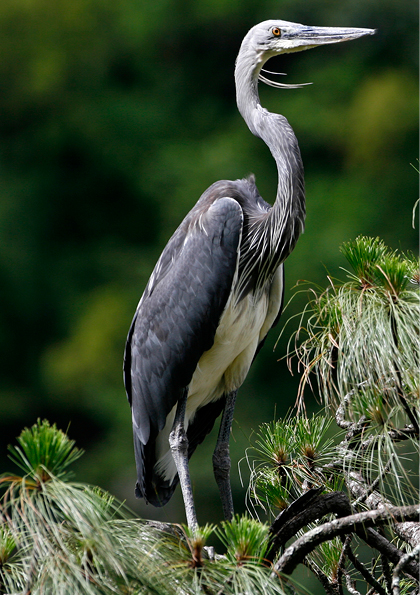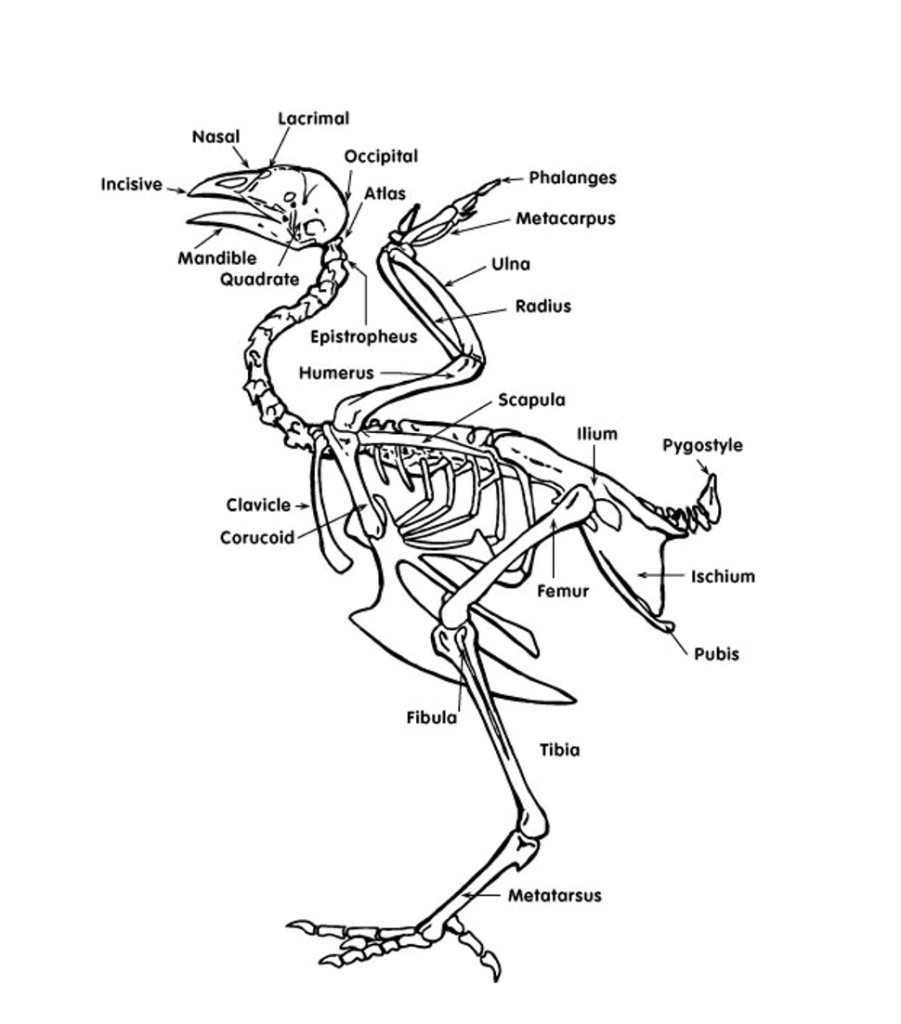
Common Name: White-bellied Heron
Scientific Name: Ardea insignis
Local Bhutanese Name: Chub Ja Pho Karp
Conservation Status: Critically endangered
Kingdom: Animalia
Phylum: Chordata
Class: Aves
Order: Pelecaniformes
Family: Ardeidae
Genus: Ardea
Species: insignis





It is primarily recorded from small or large rivers, usually with sand or gravel bars, often within or adjacent to subtropical/tropical broadleaved forest, from the lowlands up to at least 1,500 m, and marshes/lakes near wet grasslands (Choudhury 2000, A. W. Tordoff in litt. 2006). It is generally solitary but may aggregate into small flocks and family groups during winter (D. Wilson in litt. 2006, Pradhan 2007) and tends to frequent inaccessible and undisturbed areas. The species is known to breed and roost in Chir pine forest (A. W. Tordoff in litt. 2006, D. Wilson in litt. 2006), and may also nest in Terminalia myriocarpa (G. Maheswaran in litt. 2016). Four nests located in Bhutan in 2003-2007 were solitary and located in large Chir pines on ridges or steep slopes at 500-1,500 m, near the confluence of a small forest stream with a larger river (Pradhan 2007, Pradhan et al. 2007). Nesting took place in March-early June, and individuals then moved up to 30 km to feed on sand bars in large braided river systems in winter (Pradhan 2007, Pradhan et al. 2007).

SYSTEM: Terrestrial, Freshwater (inland)
HABITAT TYPE: Forest, Wetlands (inland), Grassland
GENERATION LENGTH(YEARS): 10.5 years
CONGREGATORY: Congregatory (and dispersive)
CONTINUING DECLINE IN AREA, EXTENT AND/OR QUALITY OF HABITAT: YES
MOVEMENT PATTERN: Not a Migrant
CLASSIFICATION SCHEME:
| Habitat | Seasons | Suitability | Major importance | |
| 1. Forest | 1.6. Forest – Subtropical/Tropical Moist Lowland | resident | Suitable | Yes |
| 4. Grassland | 4.6. Grassland – Subtropical/Tropical Seasonally Wet/Flooded | resident | Marginal | |
| 5. Wetlands (inland) | 5.1. Wetlands (inland) – Permanent Rivers/Streams/Creeks (includes waterfalls) | resident | Suitable | Yes |
| 5.4. Wetlands (inland) – Bogs, Marshes, Swamps, Fens, Peatlands | resident | Suitable | No | |
| 5.5. Wetlands (inland) – Permanent Freshwater Lakes (over 8ha) | resident | Suitable | Yes | |
| 5.7. Wetlands (inland) – Permanent Freshwater Marshes/Pools (under 8ha) | resident | Suitable | Yes |
Bhutan
India
Myanmar
Bangladesh
Nepal
Ardea insignis is known from the eastern Himalayan foothills in Bhutan and north-east India to the hills of Bangladesh, north Myanmar and, historically at least, across west and central Myanmar (BirdLife International 2001). The first confirmed record of this species in China was made in 2014 in Lushui County, Yunnan Province on the border with Myanmar (S. Chan in litt. 2014). It may also occur in south-east Tibet, China, but is now extinct in Nepal. Birds may visit the Brahmaputra lowlands in winter. Although historical reports suggest it was previously common in Myanmar, it has evidently declined throughout its range given the paucity of recent records. Most of the few recent records come from sites in Assam and Namdapaha in Arunachal Pradesh, India (Maheswaran 2007, A. Choudhury in litt. 2016), a few sites in Bhutan, and parts of Myanmar. In Bhutan, there is a small population of 30 known individuals (with six juveniles) as of July 2007 (Pradhan 2007), with the total national population unlikely to exceed 50 individuals (Pradhan et al. 2007). The birds were observed along the Phochu, confluence of Phochu-Mochu, Punatsangchhu, Kamechu (Digchu), Zawa, Ngagshina and Burichu confluence (Pradhan 2007), with another recent sighting along the Drangmechhu River (Wangdi et al. 2017). Six active nests were recorded in Bhutan in 2007, two from a new site, and by 26 July 2007 they held six chicks in total. Due to natural forest fires, three nests were abandoned. A further three active nests with five chicks were recorded in 2009, although only three chicks remained on a subsequent visit (Anon 2009). Six breeding sites from two rivers of central Bhutan have been recorded, and the eastern part of the country has not been thoroughly surveyed (Pradhan 2007). The species has also been reported from the Thim Chhu, Lungtenphu (C. Feijen in litt. 2009). A massive hydroelectric scheme may have recently caused its expiration from the Sunkosh Valley (K. D. Bishop in litt. 2012). Two adult birds were recorded in Phibsoo Wildlife Sanctuary, Sarpang in February 2014 (Anon. 2014). The annual survey of White-bellied Heron in Bhutan reported 22 birds in 2014, an increase from 2013 when 20 birds were recorded (Anon. 2014).
In Myanmar, the 21,700 km2 Hukaung Valley tiger reserve (the largest area of suitable habitat within the species’s range) is believed to support approximately 26-28 individuals (Price and Goodman 2015), and Hpon Razi Wildlife Sanctuary and Hkakabo Razi National Park hold small populations. White-bellied Heron has been recorded along rivers elsewhere in Kachin State, such as the Nam Sam Chaung, although little is known about its status in these areas (A. W. Tordoff in litt. 2006). Despite an increase in survey effort within the species’s range in Myanmar there has been no corresponding increase in the number of records and the species was apparently absent from large areas of suitable habitat (J. Eames in litt. 2006, D. Wilson in litt. 2006). One recent repeat survey failed to record the species in an area where it had been seen in 1998 (D. Wilson in litt. 2006). The findings of field surveys have also been supported by reports from local people which suggest that the species has declined in the region in recent years (D. Wilson in litt. 2006). This evidence suggests there may be fewer than 250 individuals remaining (J. Eames in litt. 2006, D. Wilson in litt. 2006). In north-east India, a few individuals are regularly seen in Namdapha National Park, Arunachal Pradesh (Maheswaran 2007). Up to six individuals were recorded in Namdapha Tiger Reserve in January 2014, this was followed by a breeding pair at the same location in March 2014, a first for India (Mondal and Maheswaran 2014). The nest observers had to leave the area before they were able to confirm whether the pair had successfully raised a brood, however a second visit was planned for July-August 2014. Further nest building was noted at this site in 2015, though nesting appeared to fail following a storm (G. Maheswaran in litt. 2016). Records from other sites are sporadic and there are no recent sightings from a number of former sites including Jamjing Reserved Forest, Dibru-Saikhowa National Park, Kaziranga National Park, Nameri National Park and Pabitora Wildlife Sanctuary (A. Choudhury in litt. 2012. 2016). The most recent sightings in Assam were a lone immature bird in Kanamakra area of the western buffer of Manas Tiger Reserve in 2007, two birds from Subankhata Reserved Forest, Baksa district of the eastern buffer of Manas Tiger Reserve in 2010 and an immature individual near Dibru-Saikhowa National Park in 2015 (A. Choudhuryin litt. 2012, 2016, G. Maheswaran in litt. 2016).
Number of Locations
11-100
Upper elevation limit
1,500 metres
Lower elevation limit
0 metres
Continuing Decline in Area of Occupancy (AOO)
Yes
Extreme fluctions in Area of Occupancy (AOO)
No
Estimated Extent of Occurrence (EOO) (KM²)
165000
Continuing Decline in Extent of Occurrence (EOO)
Yes
Extreme Fluctuations in Extent of Occurance (EOO)
No
Continuing decline in number of location
Unknown
Extreme Fluctuations in number of locations
No
Current population trend:
DECREASING
Number of Mature individuals
50-249
Extreme Fluctuations
No
Number of Sub Population
20 – 100
Continuing decline in sub Population
Unknown
Extreme Fluctuations in sub populations
No
All individuals in one sub populations
No
Number of individuals in largest sub populations
1 – 50
| 1. Residential & commercial development | o Commercial & industrial areas |
| 2. Agriculture & aquaculture | o Annual & perennial non-timber crops o Wood & pulp plantations |
| 3. Energy production & mining | o Renewable energy |
| 4. Biological resource use | o Hunting & trapping terrestrial animals o Logging & wood harvesting |
| 5. Human intrusions & disturbance | o Recreational activities o Work & other activities |
| 6. Natural system modifications | o Dams & water management/use |
| 7. Pollution | o Agricultural & forestry effluents |
THREATS
The main threats are presumed to be widespread loss, degradation and disturbance of forest and wetlands. The species is also very sensitive to human disturbance, for example it took 48 hours for a pair to return to their breeding site following a disturbance (Mondal and Maheswaran 2014). Wetlands have become degraded as a result of pollution, rapid growth of aquatic vegetation, and the over-exploitation of resources. Increasing disturbance and habitat degradation from settlement, conversion to agriculture, harvesting of wetland resources and, more locally, poaching are thought to present significant threats in key protected areas (e.g. Namdapha National Park) in north-east India, Bhutan and Myanmar (W. Duckworth in litt. 2006). Natural forest fires have destroyed nests in Bhutan. In Bhutan, hydroelectric dam developments as well as road improvements have resulted in significant habitat degradation, and can affect heron populations (Price and Goodman 2015). Rivers act as busy transport routes for the human population, exacerbating disturbance of this species (W. Duckworth in litt. 2006, D. Wilson in litt. 2006).
| Threats | Timing | Stresses | Scope | Severity | ||||
| 1. Residential & commercial development | 1.2. Commercial & industrial areas | Future | 1. Ecosystem stresses | 1.1. Ecosystem conversion 1.2. Ecosystem degradation | Minority (<50%) | Very Rapid Declines | ||
| 2. Agriculture & aquaculture | 2.1. Annual & perennial non-timber crops 2.2. Wood & pulp plantations | 2.1.3. Agro-industry farming 2.2.2. Agro-industry plantations | Ongoing Ongoing | 1. Ecosystem stresses 1. Ecosystem stresses | .1. Ecosystem conversion 1.2. Ecosystem degradation | Majority (50-90%) Minority (<50%) | Slow, Significant Declines Slow, Significant Declines | |
| 3. Energy production & mining | 3.3. Renewable energy | Ongoing | 1. Ecosystem stresses | 1.1. Ecosystem conversion 1.2. Ecosystem degradation | Minority (<50%) | Slow, Significant Declines | ||
| 5. Biological resource use | 5.1. Hunting & trapping terrestrial animals 5.3. Logging & wood harvesting | 5.1.1. Intentional use (species is the target) 5.3.3. Unintentional effects: (subsistence/small scale) [harvest] | Ongoing Ongoing | 2. Species Stresses 1. Ecosystem stresses | 2.1. Species mortality 1.2. Ecosystem degradation | Minority (<50%) Majority (50-90%) | Slow, Significant Declines Slow, Significant Declines | |
| 6. Human intrusions & disturbance | 6.1. Recreational activities 6.3. Work & other activities | Ongoing Ongoing | 2. Species Stresses 2. Species Stresses | 2.2. Species disturbance 2.3. Indirect species effects | 2.3.7. Reduced reproductive success 2.3.7. Reduced reproductive success | Whole (>90%) Whole (>90%) | Slow, Significant Declines Slow, Significant Declines | |
| 7. Natural system modifications | 7.2. Dams & water management/use | 7.2.11. Dams (size unknown) | Ongoing | 1. Ecosystem stresses | 1.1. Ecosystem conversion 1.2. Ecosystem degradation | Minority (<50%) | Slow, Significant Declines | |
| 9. Pollution | 9.3. Agricultural & forestry effluents | 9.3.4. Type Unknown/Unrecorded | Ongoing | 1. Ecosystem stresses | 1.2. Ecosystem degradation | Majority (50-90%) | Slow, Significant Declines |
o Taxonomy
o Description
o Conservation
o Literature
o Awareness program
o Population survey
o community participation
o Youth engagement
o In-situ conservation
o Ex-situ conservation
o Conservation rules and regulations
o Conservation partners
o Donors
o Implementers
o Global distribution
o Bhutan Distribution
Copyright © 2025 RSPN All Rights Reserved